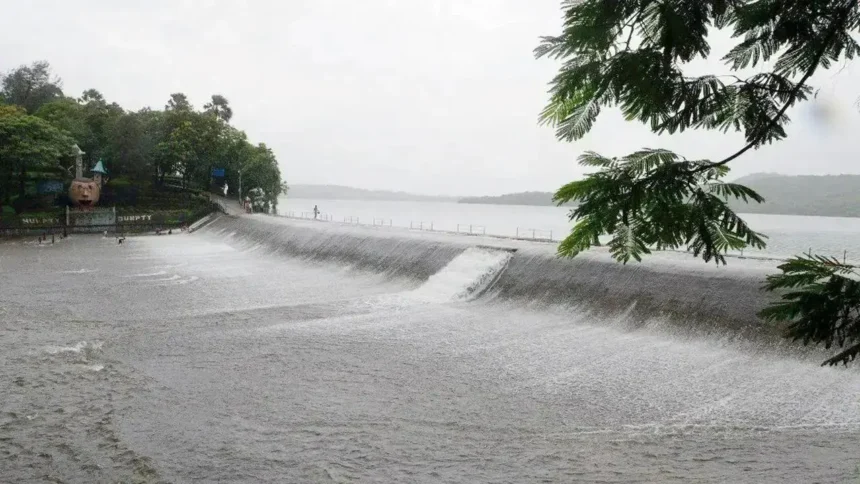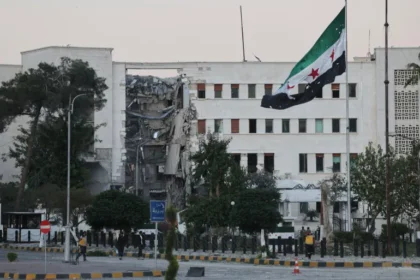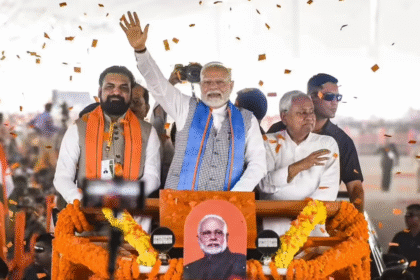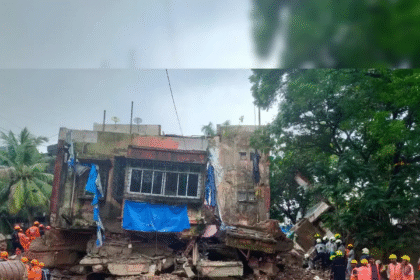Monsoon Mercy — How Rising Reservoir Levels Are Reassuring a Thirsty City
As July rains continue to drench the western coast of India, Mumbai—India’s financial and cultural capital—finally breathes a cautious sigh of relief. After weeks of anxious monitoring, civic authorities announced that water levels in the city’s seven vital reservoirs have surged to 73.88% of their full storage capacity. For a city that consumes approximately 3,800 million litres of water every day, this development signals more than just numbers on a chart—it is a reassurance, a promise of continuity in a metropolis that lives in extremes.
Mumbai’s relationship with its water sources is far from ordinary. The city draws its daily supply from seven lakes spread across various catchment areas outside its municipal limits: Modak Sagar, Tansa, Tulsi, Vihar, Upper Vaitarna, Bhatsa, and Middle Vaitarna. These reservoirs function not just as infrastructure assets but as lifelines. In good years, they overflow by the end of August, comfortably supplying the city through the dry months. In bad years, water cuts, protests, and even civic chaos are not uncommon.
This year, however, the scenario has shifted positively. Consistent rainfall over the past three weeks has filled catchment areas across Thane and Nashik districts, with Modak Sagar and Tansa leading the recovery. On-ground rainfall has been matched by upstream inflows—an encouraging combination that has put Mumbai in a much stronger position than in previous years at this point in the monsoon.
But behind this surge lies a deeper story—one that weaves through meteorological trends, civic engineering, policy lapses, and urban growth. Mumbai is a city of over 20 million people, all dependent on a complex and aging water distribution system that stretches over hundreds of kilometers. Even in the best of conditions, equitable distribution remains a challenge. Leakage, illegal connections, low-pressure zones, and slum clusters without piped access highlight how fragile the system is under stress.
In the early days of June, when the monsoon was delayed and lakes remained below 15% capacity, the Brihanmumbai Municipal Corporation (BMC) was quietly drawing up contingency plans. Sources within the hydraulic department confirmed that proposals for 10%-15% water cuts were prepared, awaiting formal announcement if rains didn’t arrive by mid-July. Tanker supply rates were reviewed, and desalination project updates—usually confined to paper—began circulating once again in departmental meetings.
Fortunately, nature intervened.
The impact of the rain-fed rebound is already visible across the city. Low-income housing colonies in eastern suburbs that were receiving alternate-day supply have reported improved frequency. Private societies in Andheri, Dadar, and Mulund that were dependent on tankers since April have canceled scheduled deliveries. For now, the specter of rationing has receded.
Yet, experts warn that relief should not morph into complacency.
Dr. Harsha Mehta, a hydrologist at IIT Bombay, reminds us that while rainfall has rescued the city this time, Mumbai remains dangerously dependent on a centralized, seasonal, and climate-sensitive water supply model. “We’ve not built redundancy into our system,” she says. “If a single monsoon cycle goes wrong, the city feels the tremors immediately. That’s not sustainable.”
The current water surge should ideally act as a springboard for deeper civic introspection. Are we doing enough to harvest rainwater? Have we mapped and protected urban aquifers? Can we truly afford to let 30% of our treated water get lost to distribution leakages? These are not new questions—but every year they return with sharper urgency.
In the next few parts of this series, we will dive deeper into the operational mechanics of Mumbai’s water supply system, explore the vulnerabilities in its reservoir infrastructure, examine the civic governance model of water distribution, and reflect on whether Mumbai is ready for a future where climate shocks and population growth may collide with deadly intensity.
For now, though, Mumbai can look up at its grey skies with a bit more gratitude. The clouds have delivered. The lakes are filling. And the taps, at least for the moment, will not run dry.
While the recent surge in lake levels brings visible relief to Mumbai, the true story of how that water reaches more than 20 million residents each day is buried beneath layers of infrastructure, legacy engineering, and civic management that few outside the BMC ever get to see. The system appears deceptively simple—collect rain in reservoirs, treat it, pump it, distribute it. But in a city as vast, vertical, and congested as Mumbai, every step of that journey is a logistical and technical marvel in its own right.
At the heart of this water ecosystem are the seven reservoirs that form the backbone of Mumbai’s water supply. Bhatsa, located in Thane district, is the largest of these, contributing over 40% of the total water supply. Modak Sagar and Tansa, both built during the British era, remain crucial for their storage and proximity to the city. Tulsi and Vihar, nestled within the Sanjay Gandhi National Park, serve mostly South Mumbai. Upper and Middle Vaitarna, built later to meet the city’s growing needs, together account for a substantial share of reserves.
These lakes do not exist in isolation. A vast network of gravity-fed tunnels, pumping stations, filtration plants, and booster points connects them to the city. The water is first diverted from the reservoirs to filtration units—such as the Bhandup complex, one of Asia’s largest water treatment facilities. Here, modern systems purify the raw water to meet international quality standards before it is sent on to neighborhoods through a pipeline network that spans over 5,000 kilometers.
But this network, like much of Mumbai’s civic infrastructure, is a product of legacy planning—pieces of it dating back over a century. While the BMC has invested in periodic upgrades and new pressure management systems, a large portion of the pipelines remains underground, aging, and vulnerable. Leakages alone account for an estimated 25% to 30% of the total treated water—an astonishing figure in a city that periodically struggles with drought-like conditions.
The pressure challenges are equally severe. In neighborhoods like Ghatkopar, Kurla, and Mankhurd, residents often complain of low water pressure, especially during peak morning hours. In high-rises, booster pumps are a necessity. In contrast, older parts of South Mumbai, thanks to gravity advantage and older civic layouts, enjoy more consistent supply. This disparity is further accentuated in slum settlements, where residents may wait hours for tanker deliveries or rely on illegal connections snaking through narrow lanes.
Despite these inequalities, the city’s water management system deserves some credit. Few megacities globally manage to provide piped water to such a massive population every day with relative consistency and quality. The BMC’s hydraulic department, often unseen and unsung, works round-the-clock to monitor pressure points, test water quality, respond to pipeline bursts, and coordinate inter-departmental efforts during floods or shortfalls.
Yet, as the city expands both horizontally and vertically, pressure on the system grows. The rapid vertical growth of suburbs like Powai, Goregaon, and Kandivali means more demand per square kilometer. Meanwhile, climate unpredictability—with erratic monsoons, longer dry spells, and flash floods—introduces new variables to a system that was designed in a different era. It’s not just about whether the lakes fill up anymore—it’s about whether the city’s pipes, pumps, and people can keep up with the changing nature of water consumption and supply.
Another major issue is data. Mumbai’s water system operates with surprising opacity. Real-time leakage data, consumption analytics by ward, and pipeline stress reports are either unavailable to the public or outdated. In a digital era, such data could be critical not just for civic planners but also for developers, researchers, and residents trying to make informed decisions about consumption, rainwater harvesting, or tank storage.
In the coming sections of this series, we’ll explore how Mumbai’s citizens—residents, RWAs, builders, and activists—are responding to these gaps. We’ll also look at case studies from global cities that have modernized their water grids with smart technology and public accountability.
For now, though, as the monsoon clouds refill the lakes above, the city must also begin thinking about what lies beneath the surface—and whether its aging arteries can carry the weight of a fast-changing, fast-growing Mumbai.
While the rise in lake levels this monsoon has delivered welcome respite, the deeper challenges of water security in Mumbai cannot be separated from the city’s evolving urban landscape. In recent decades, Mumbai has grown not just outward into its suburban and peri-urban zones, but upward, driven by the real estate boom and relentless population growth. This transformation has significantly altered how water is consumed, distributed, and in some cases, wasted.
Mumbai’s population today hovers around 20 million, and projections suggest it could reach 25 million by 2040. At the same time, the city’s physical footprint has expanded rapidly into formerly peripheral areas—like Vasai-Virar, Kalyan-Dombivli, Panvel, and Mira-Bhayandar—now integrated into the wider Mumbai Metropolitan Region (MMR). These newly urbanized zones place additional strain on the already-stretched water infrastructure, most of which was designed decades ago for a smaller, more contained city.
Much of the residential development in recent years has been concentrated in high-rise buildings, especially in eastern and western suburbs such as Powai, Mulund, Andheri, Borivali, and Goregaon. Each new tower brings with it a massive increase in per capita water demand—not just for personal use, but for maintenance, car washing, landscaping, and construction. As a result, the average daily demand for water in Mumbai now exceeds 4,200 million litres, while the BMC’s current capacity hovers between 3,800 and 4,000 million litres on most days.
This gap is managed temporarily through tanker supplies, borewells, or illegal tapping, especially in areas where the municipal network has not kept pace with the scale of development. But these stop-gap measures only mask the underlying pressure building within the system. What happens when a particularly dry monsoon leaves lake levels at half capacity? What happens when developers build before infrastructure arrives? These questions are no longer hypothetical—they are real and recurring.
The construction boom has also placed new demands on water usage. While developers are required to use non-potable water for construction purposes, enforcement is inconsistent. Many rely on tanker services that draw from borewells in surrounding villages—an extraction pattern that has begun to create water stress in adjacent rural zones, ironically exporting Mumbai’s burden outward.
Then there is the issue of informal settlements and slum clusters, which house over 40% of Mumbai’s population. Many of these communities either have irregular access to piped water or are dependent on shared taps with limited supply windows. In such areas, water is not just a basic need—it’s a commodity, one that is negotiated, rationed, and in some cases, controlled by informal networks. Any disruption in supply affects these populations first and most severely, highlighting the deep class divide that still governs access to Mumbai’s most essential resource.
Urban planning regulations have failed to keep pace with these challenges. While building permissions mandate certain water supply and rainwater harvesting provisions, the implementation and monitoring are weak, and violations are rarely penalized. Moreover, municipal expansion does not always translate into upgraded infrastructure. New buildings may be approved in rapidly developing zones like Malad East or Bhandup without corresponding investment in pipeline expansion, pressure management systems, or local reservoir development.
What’s missing is a holistic, data-driven urban water strategy that integrates population projections, land-use planning, environmental conservation, and infrastructure investment. Mumbai, despite its world-class status, lacks a long-term master plan for water. Fragmentation of responsibility among the BMC, MMRDA, and state authorities means that efforts are often reactive rather than preventive.
There are, however, rays of hope. Some townships, particularly in Navi Mumbai and Thane, have begun implementing dual plumbing systems that separate potable from non-potable water. Several new housing societies are also adopting greywater recycling, drip irrigation, and smart metering. But these are isolated initiatives. Without widespread civic engagement and regulatory enforcement, such efforts will remain marginal.
The truth is, water scarcity in Mumbai is not just a matter of natural supply—it is a consequence of urban ambition outpacing planning. And unless this gap is bridged with urgency, even a season of abundant rainfall may not prevent a future of artificial scarcity.
Certainly. Here’s Part 4 of the professional, paragraph-based long-form article series on Mumbai’s rising lake levels, now focusing on the impact of climate change on rainfall patterns and how it’s destabilizing the city’s water security assumptions.
Unpredictable Skies — How Climate Change Is Reshaping Mumbai’s Rainfall and Reservoir Reality
Monsoon in Mumbai has long been regarded as a seasonal certainty. Come June, the city expects grey clouds, swelling lakes, and waterlogged streets. But in recent years, the rhythms of the monsoon have grown erratic—arriving late, departing early, or unleashing excessive downpours over short periods that strain both infrastructure and public safety. While Mumbai may have breathed a sigh of relief with reservoir levels reaching 73.88% this year, climate change is casting an increasingly long shadow over its water future.
India’s monsoon, a complex meteorological system driven by ocean temperatures, wind currents, and atmospheric pressure, is becoming more volatile under the influence of global warming. The Indian Meteorological Department (IMD) and several international climate studies have pointed to a worrying trend: fewer rainy days, but more intense bursts of rainfall. Instead of steady showers over weeks that gradually replenish reservoirs, Mumbai is now seeing erratic cloudbursts that flood roads but fail to adequately recharge catchment zones.
This shift is critical. Mumbai’s water supply depends not just on rainfall in the city but in specific catchment areas located dozens or even hundreds of kilometers away—in Thane, Nashik, and Palghar districts. When rainfall bypasses these regions, lake levels stagnate, even if the city itself experiences heavy showers. In the drought-scare year of 2018, for instance, Mumbai faced potential water cuts despite above-average rainfall within city limits because the reservoirs hadn’t been adequately recharged.
More recently, Cyclone Biparjoy in 2023 demonstrated how climate volatility can disrupt the onset of monsoon altogether. The cyclone’s unusual path delayed the arrival of rains over the Konkan coast by nearly two weeks. That delay caused significant anxiety, especially since early June is a critical period for lake replenishment. Even in 2025, the current year in focus, the monsoon was late by 5 days, prompting the BMC to review emergency water management protocols.
Extreme rainfall events are also undermining infrastructure. Sudden deluges have caused reservoir overflows to become flash floods, damaging bunds and irrigation channels and releasing silt into water bodies, which then requires additional treatment. Additionally, the concentration of heavy rainfall over fewer days leads to higher surface runoff and lower groundwater recharge—meaning less sustainable long-term water availability, especially in buffer reservoirs.
Climate models suggest that these patterns are not anomalies—they’re part of a growing climate-induced shift that Mumbai must prepare for. Studies from the Indian Institute of Tropical Meteorology (IITM) indicate that the frequency of 200mm+ rainfall days in Mumbai has doubled over the last two decades. These extreme weather days are becoming more common—and more dangerous.
So what does this mean for Mumbai’s water future?
First, it calls for a radical reassessment of reservoir management practices. Most of Mumbai’s reservoirs were designed in the 19th and 20th centuries, assuming relatively consistent seasonal rainfall. But those assumptions no longer hold. Civic planners must now integrate real-time weather data, predictive analytics, and dynamic water-level monitoring to make smarter, faster decisions about water storage and release.
Second, there is a growing need for distributed water storage solutions. Relying solely on seven large lakes makes the system fragile in the face of spatial rainfall disparity. Decentralized rainwater harvesting—at building, ward, and institutional levels—can act as both a buffer and a recharge mechanism. Cities like Chennai and Bengaluru have already introduced such mandates, albeit with mixed enforcement. Mumbai, despite being a coastal megacity, has lagged in this area.
Third, groundwater management must be brought into sharper focus. With borewell usage rising across the suburbs, the risk of aquifer depletion and contamination is growing. The Maharashtra Groundwater Authority has mandated registration of wells and drilling, but compliance remains weak. Unchecked extraction not only drains underground reserves but also opens up risk zones for saline water intrusion in coastal belts—a long-term ecological threat.
Finally, Mumbai must also rethink its emergency planning frameworks. Water scarcity in a city of its size can have cascading effects on health, sanitation, commerce, and public morale. Yet, water crisis preparedness is often limited to short-term tanker contracts and rationing announcements. What’s needed is a comprehensive water resilience plan—one that integrates meteorological forecasting, climate science, urban planning, and civic accountability.
To be clear, climate change is no longer a distant danger—it is here, reshaping how cities function and survive. Mumbai, with its monsoon dependence and high-density urban sprawl, sits on the frontlines of this transformation. And if it hopes to navigate the coming decades with any degree of certainty, it must stop treating water security as a seasonal issue and start embedding it into the very core of how the city is governed and built.
For centuries, Mumbai’s monsoon has been the great equalizer—the seasonal force that transformed cracked earth into overflowing reservoirs and bone-dry months into rivers of hope. But in recent years, that rhythm has grown erratic. Climate change, once discussed as a future threat, is now visibly disrupting the city’s most crucial natural resource cycle. And as the city’s water supply remains almost entirely monsoon-dependent, this volatility is far from academic—it is existential.
Historically, Mumbai has relied on the Southwest Monsoon, which arrives in June and continues through September, to fill its seven reservoirs. The expectation is that a full monsoon will replenish lake levels to near 100% of their capacity by early September, providing enough water to last until the next June. This cyclical predictability has guided the city’s entire water management framework. But climate change is systematically upending that predictability.
Rainfall data from the India Meteorological Department (IMD) over the past two decades shows increasingly skewed distribution. While the total seasonal rainfall in some years remains on average, the pattern of rainfall is shifting toward intense, short bursts rather than steady, evenly spaced showers. This results in flash floods on one hand and inadequate lake catchment recharge on the other. A downpour that dumps 300 mm in a single day might overwhelm the city’s stormwater drains but still do little to significantly raise lake levels if it falls in the wrong location or flows off before absorption.
This year’s surge in reservoir levels—rising to 73.88%—is a case of meteorological fortune, not infrastructure certainty. A low-pressure system over the Arabian Sea aligned well with inland monsoon currents, delivering rain directly over major catchment areas. But this isn’t guaranteed in coming years. In 2019 and again in 2022, erratic monsoons led to dangerously low reservoir levels by mid-July, prompting water cuts and civic alerts. The city is, quite literally, a few bad rain cycles away from crisis.
What complicates the matter is the geographic dislocation between the city and its water sources. Mumbai’s reservoirs are located in districts like Thane, Nashik, and Palghar—areas that receive rainfall differently than the island city. A torrential week in South Mumbai may dominate headlines, but if Modak Sagar or Tansa receive inadequate inflow, the celebration is premature. Climate modeling indicates that rain shadow zones may grow more pronounced in the coming decades, increasing the variability of lake inflows despite consistent rainfall in the urban core.
Moreover, rising temperatures are changing how much water we need and how quickly we lose it. Urban heat islands, created by concrete proliferation and loss of green cover, raise localized temperatures and increase evapotranspiration from water bodies and soil. This means reservoirs lose water faster during the dry months, and consumption increases as citizens use more water for cooling, cleaning, and personal use.
From a planning standpoint, the implications are sobering. Mumbai cannot continue to depend solely on the monsoon to meet its year-round water needs. Even in good years, the risk is growing that the timing or distribution of rainfall will leave lakes underfilled or empty prematurely. And in bad years, the entire model could collapse into emergency measures.
Climate resilience, therefore, must become a cornerstone of water management in the city. This includes:
- Diversifying sources beyond rain-fed lakes—such as desalination, treated wastewater reuse, and aquifer tapping.
- Strengthening water storage through decentralized reservoirs, urban tanks, and underground cisterns.
- Integrating climate risk assessments into infrastructure planning—so that rainfall volatility is factored into every major civic project, from new townships to industrial corridors.
- Investing in predictive analytics, satellite-based monitoring, and real-time hydrological modeling to track catchment saturation, inflows, and lake depletion in a more precise and forward-looking manner.
Some of these steps are already in early implementation. The Mumbai Desalination Plant, proposed at Manori, is expected to produce 200 million litres of drinking water daily, offering some cushion during lean monsoon years. Similarly, the BMC has begun exploring the use of artificial intelligence and IoT sensors to monitor pipeline efficiency and detect leakage.
But these remain fragmented efforts. What Mumbai needs is a climate-integrated water security policy, one that accepts that the rains of the past are not guaranteed to return. Preparing for this new normal is not just the job of the BMC—it is a collective civic responsibility.
Also Read : Elon Musk’s Tesla to Launch First Showroom in Mumbai Next Week: EV Maker’s India Debut Begins








